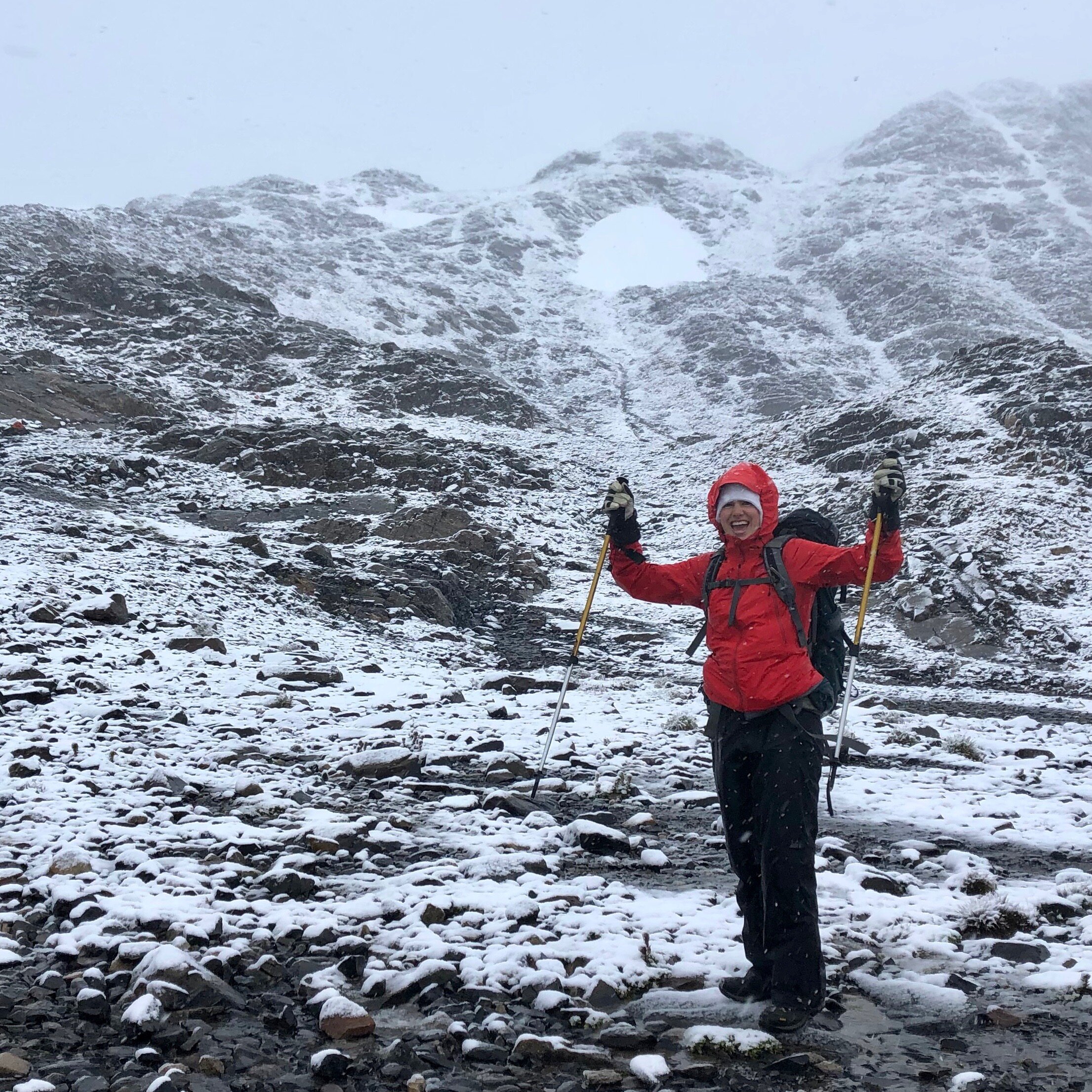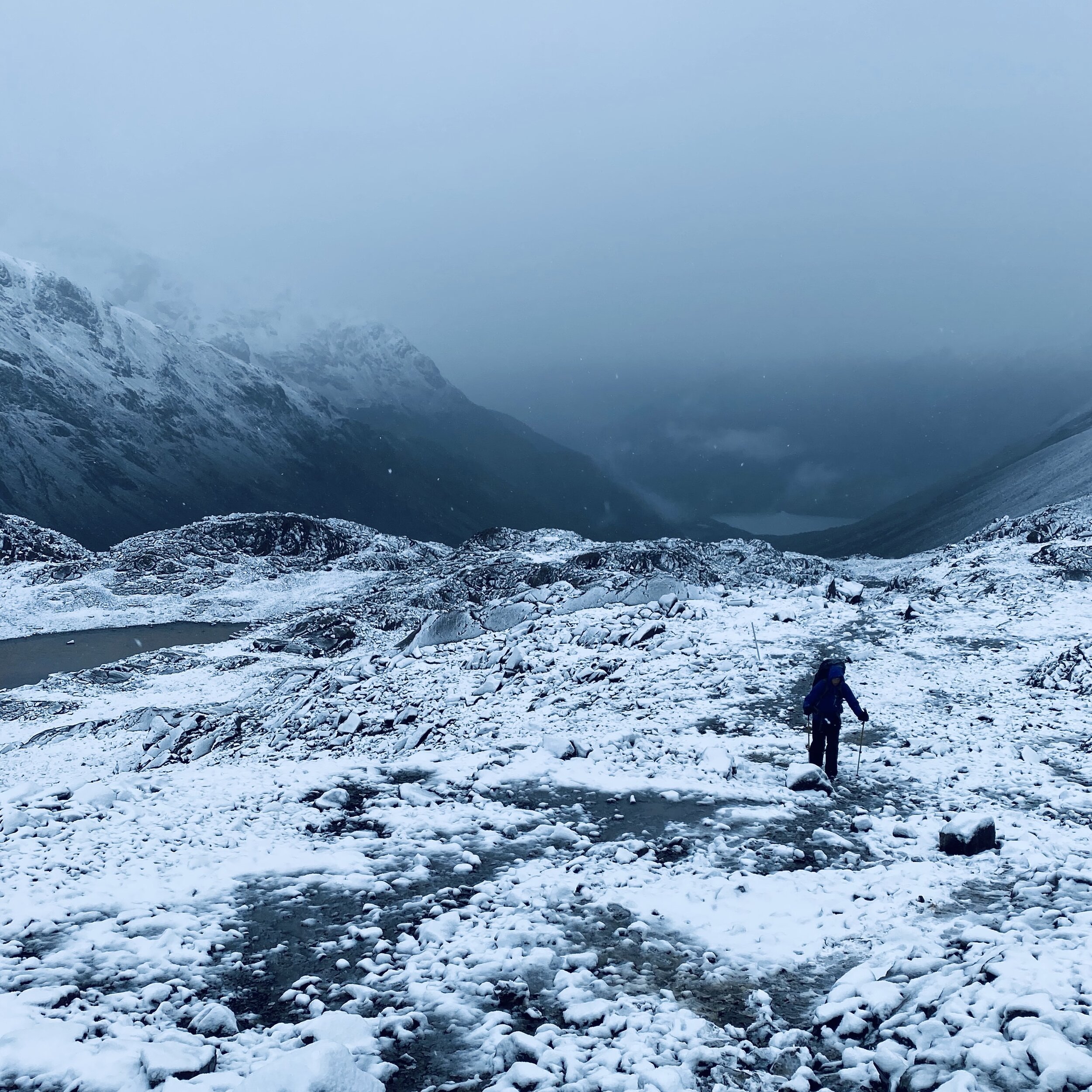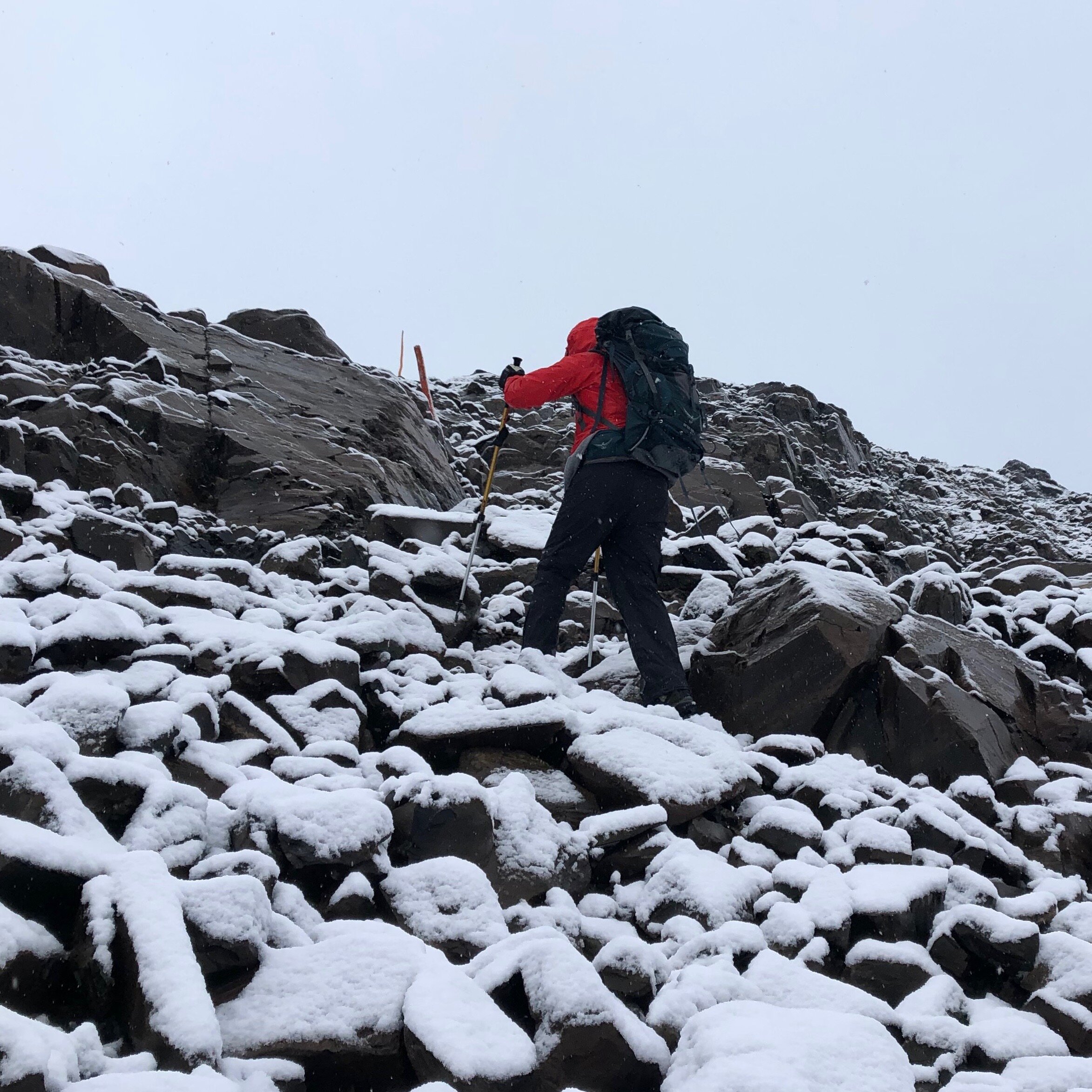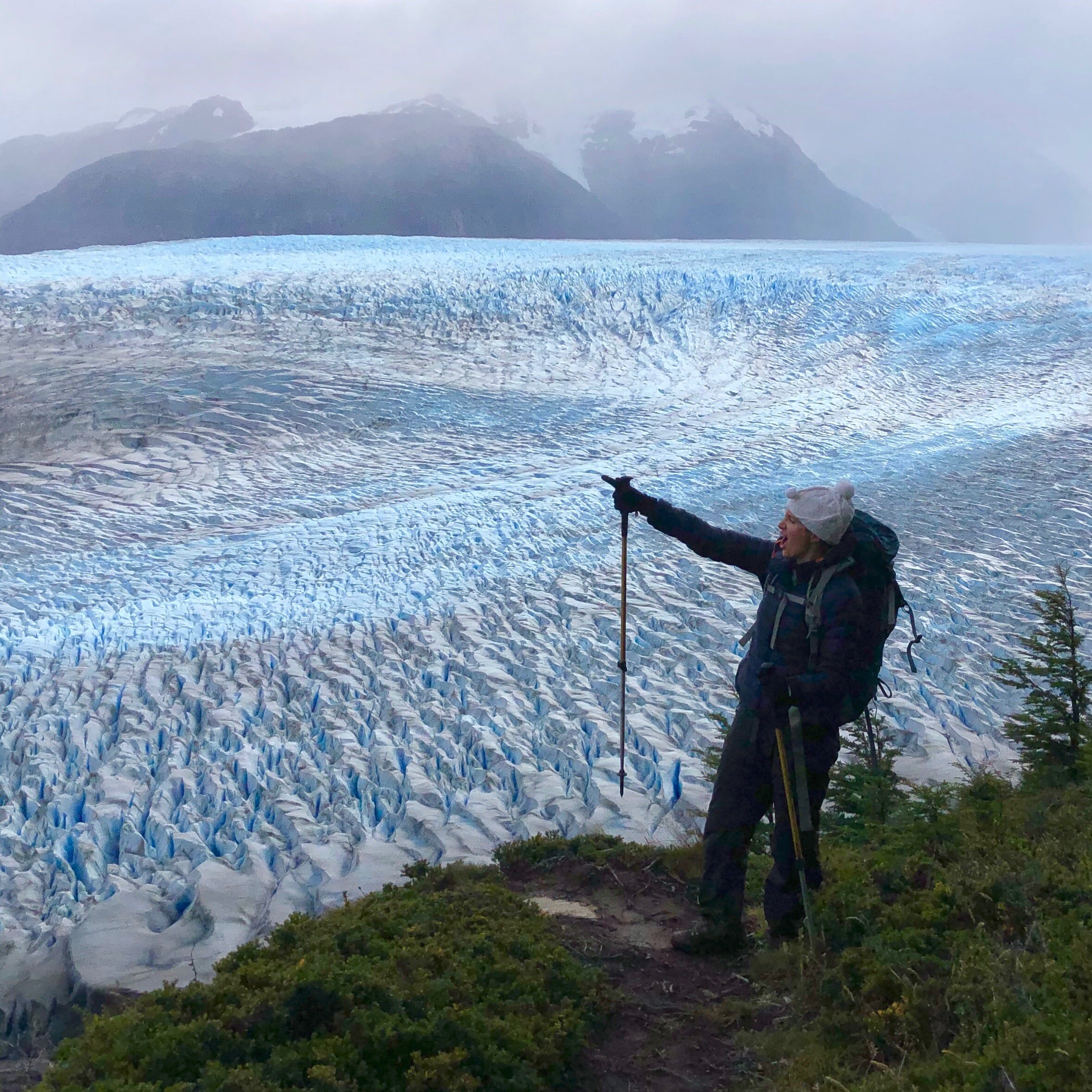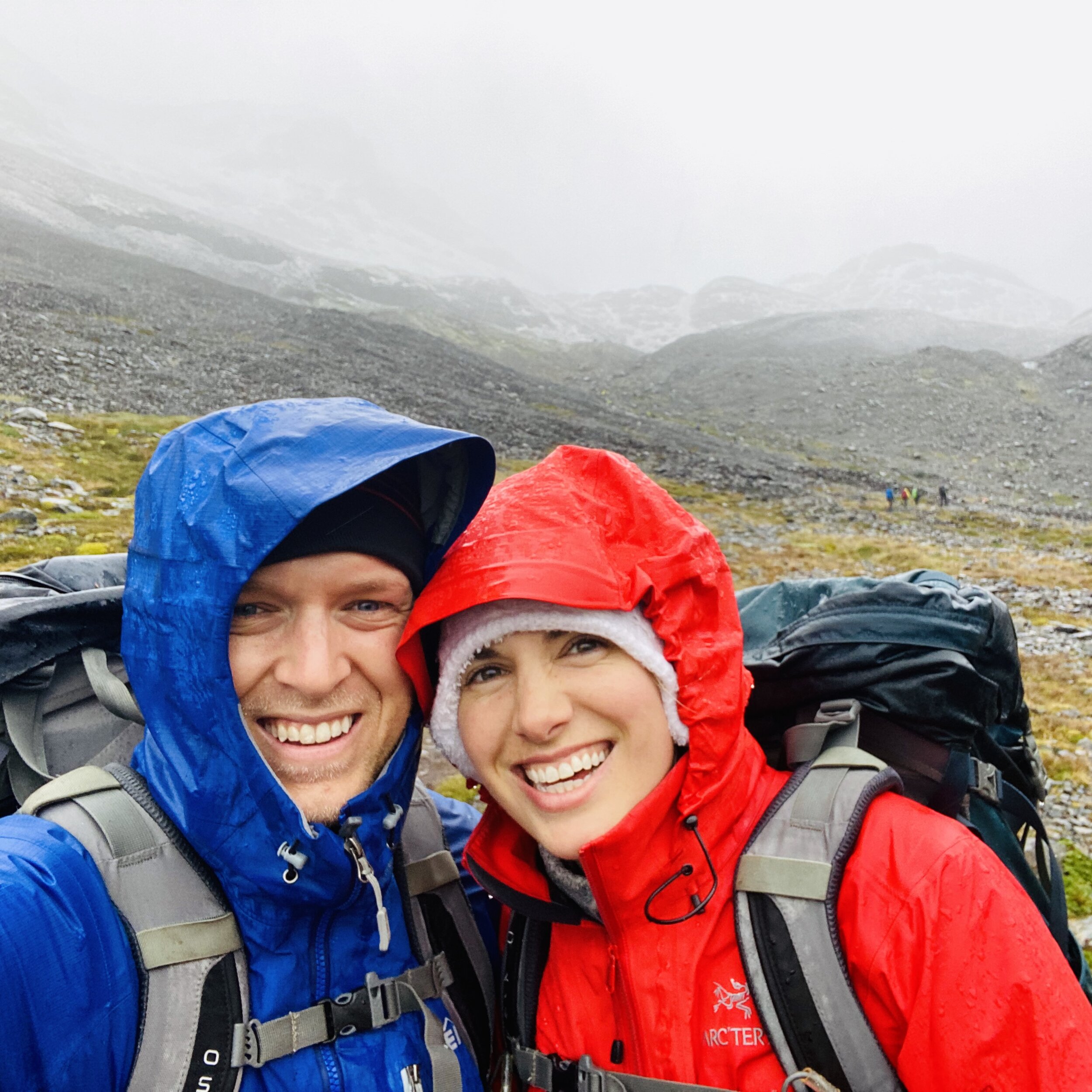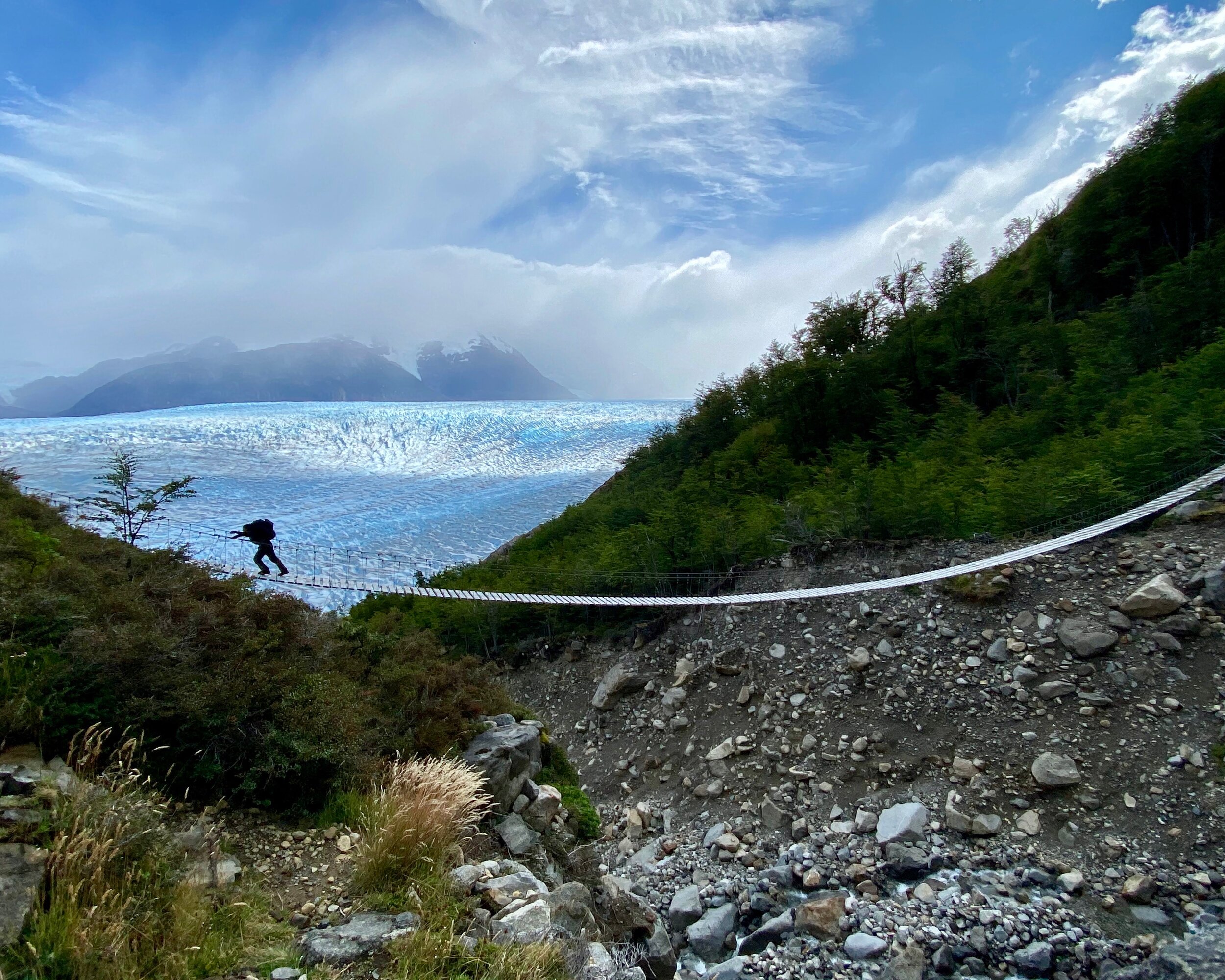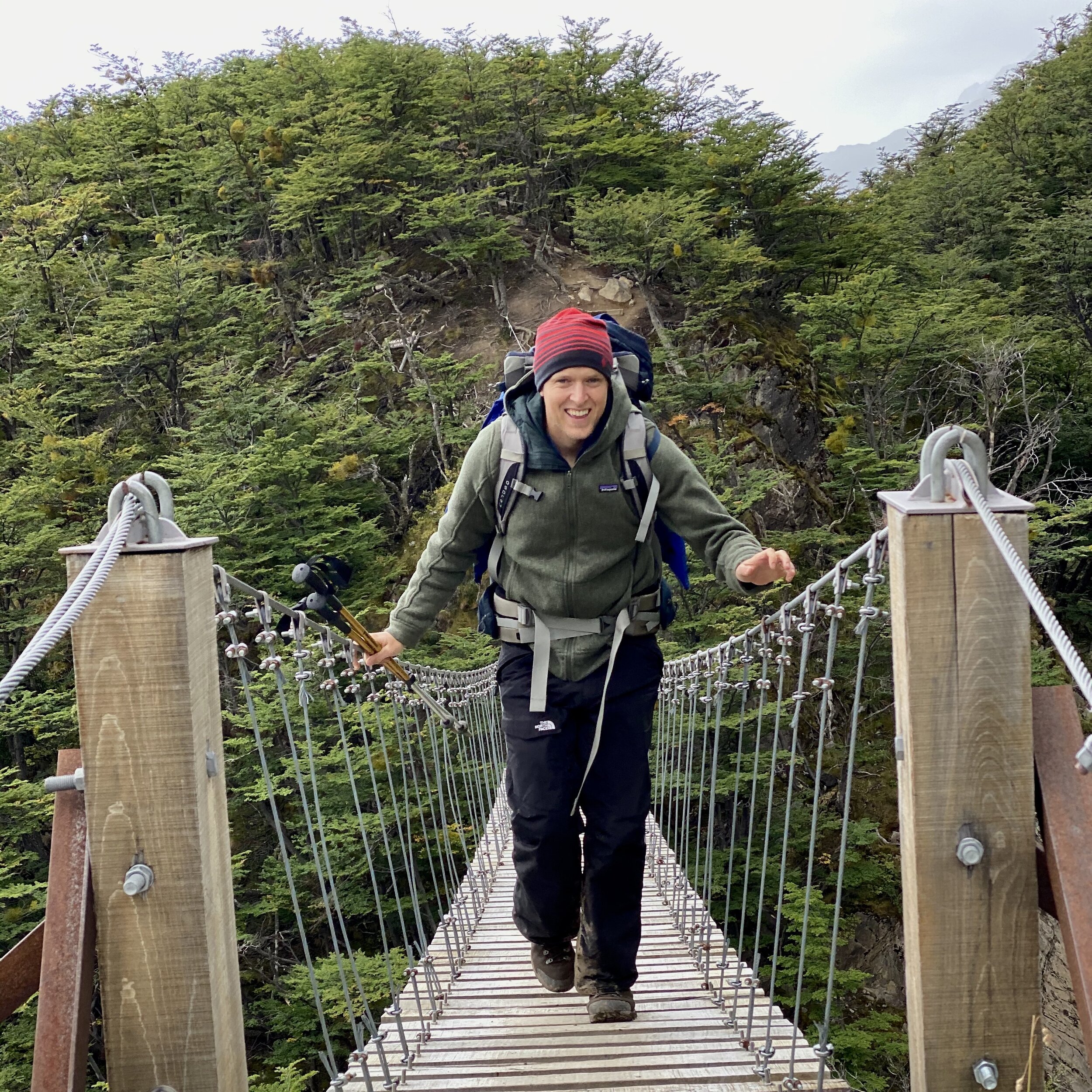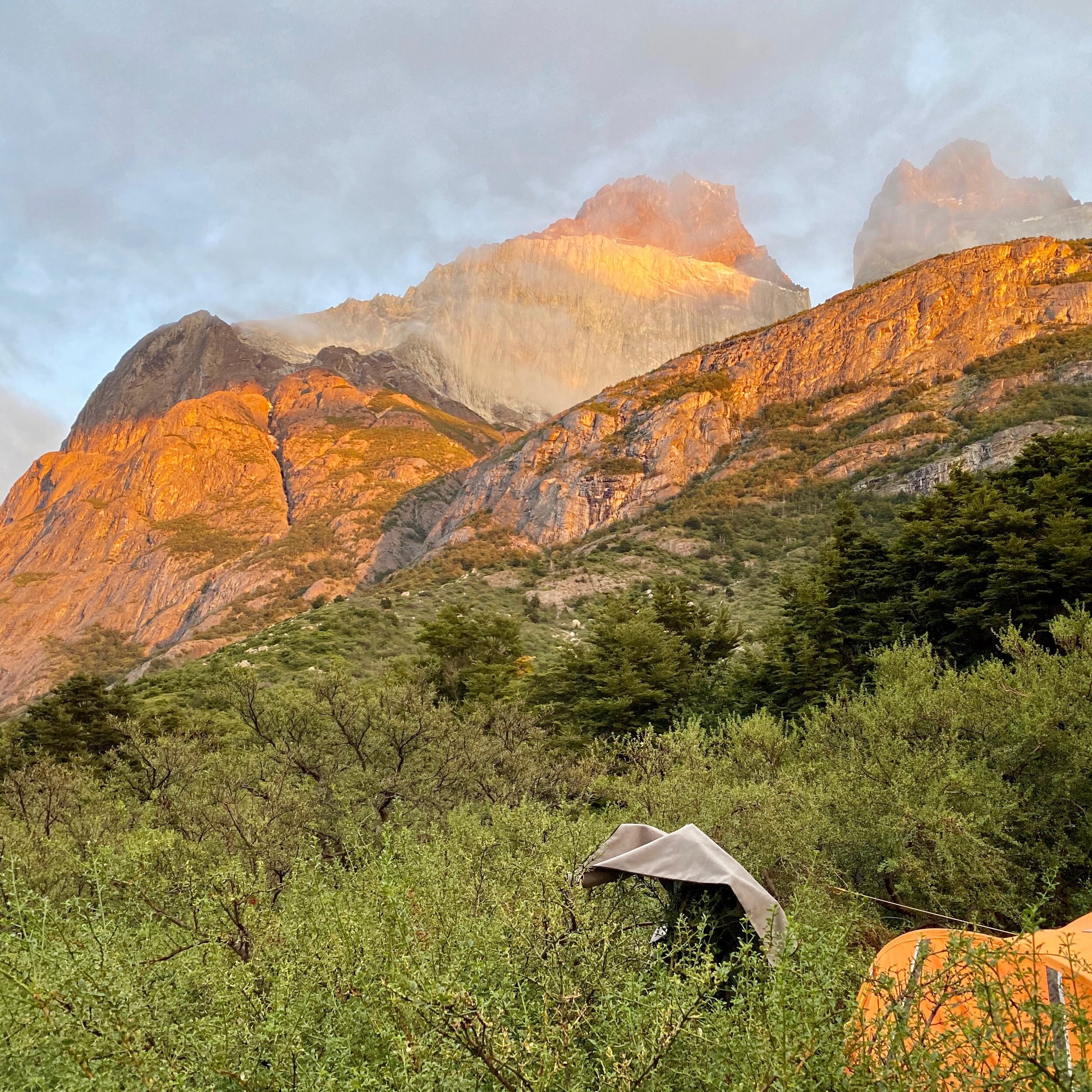After 3 weeks of day-hiking in New Zealand, we kicked it up a notch with a 10-day trek in Patagonia. Flying halfway around the world for more hiking sounded crazy to us too, initially. Lucky for us, we actually GAINED time by making the jump to South America. Our flight from Auckland departed at 8PM and arrived at 4PM in Buenos Aires - on the same day!
Our journey around the O-Trek turned out to be much more spectacular (and way more intense!) than we could have possibly imagined. We met some amazing people, hiked 120km, and once again got caught in a crazy blizzard at the trail’s highest point.
Journal
Day 1: Torre Central to Dickson Camp (33 km)
Our expedition around the Full Circuit in Torres Del Paine started with a bang. We woke up at 5 AM to select our gear and organize our packs for the full week and fuel up with breakfast. We met our amazing porters, a team of 3 who carried our tents, mats, and backpacks each night. When we asked them which day was the hardest, they responded, “the first day”. We quickly found out why: we set off at 7 AM for a 33km hike to Dickson camp over a “Patagonia flat” trail. What does “Patagonia flat mean”? It means the endpoint is about the same elevation as your starting point, but there is constant inclines and declines before you reach your destination.
Luckily, the weather was picture perfect. We were both in short sleeves and pants for the entire day and reapplied sunscreen every hour to protect ourselves from the beating sun. The trail snaked through a gorgeous valley and around the sides of jagged, rugged mountains. At one point, our guide pointed out our destination, and it seemed impossibly far away. While in the valley, a herd of 100+ horses approached us expecting food - but they later dispersed when they learned we had none. Once we hit 10 hours on the trail, our feet were killing us, especially with 25 or 30 pounds of weight on our backs. After grinding through the last 3 hours, we climbed up onto a small ledge and could see that night’s resting place, Dickson camp. We had dinner and slept in our sleeping bags in the Dickson refugio to let our aching feet heal before we get after it again the next day.
Day 2: Dickson Camp to Perros Camp (11 km)
The best part about the O-trek is that we could access some of the more remote parts of the park. The second day of hiking to Perros was through a magical forest, which seemed to be untouched for centuries. The air seemed to be pristinely clean because we were hundreds of miles away from the largest city. The trees were covered in a delicate white moss, known as ‘grandpas beard’, which only grows in areas where there is no air pollution. The forest was quiet and we didn’t see any other hikers for the entire duration of our 6-hour hike. The light rain pattered on the leaves as it seemed like we were creeping through the most mystical part of the National Park.
Day 3: Perros Camp to Grey Camp (22 km)
This was the toughest day of the entire trek! Though we covered less distance than Day 1, there was far more elevation gain, and the weather took a turn for the worse when we reached the peak of John Gardener pass. We set off at 6 AM in the dark with our headlamps in the rain. The rain persisted for the entire morning. When we reached the edge of the forest, our guide told us to gear up to our rain/blizzard shells because we wouldn’t have any tree cover for the next 3 hours. He was definitely right.
The climb through John Gardener pass was easily the toughest section of the entire expedition. When we emerged from the forest, the rain began to transform into sleet, then to snow, as we climbed the 800 meters through the pass. The snow started out peacefully, then the wind picked up BIG TIME as we climbed through the pass. We thought we arrived at the peak multiple times, only to find out that we had another tier to climb that looked too far away. As we climbed, we needed to keep our head down to avoid the ice pellets stinging our face. When we finally reached the top, we took a team photo but could only pause for a moment because of the whipping wind. As we started to descend on the opposite side of John Gardener pass, we were confronted by a MASSIVE glacier, one bigger than we had ever seen before. Adam was flabbergasted and shouted, “that’s not a glacier, is it?” It went on for as far as the eye could see.
When we re-entered the trees on the other side of the pass, we paused for coffee. Everyone was freezing. Our “waterproof” pants and shells were soaked all the way through to our base layer. After 15 minutes of rest, we had to keep going to stay warm. We walked quickly to the next camp 2 hours away, where we ate lunch and stripped off our soaking base layers to let them dry. The final 4 hours was far more pleasant, but we had some extra excitement when we needed to cross 3 long rope bridges that could only support one person at a time. When we arrive at Grey Camp, our feet ached again, and we were thoroughly exhausted. Thankfully, we slept again inside the warm Refugio with clean white sheets and blankets, and even a fireplace outside in the hallway!
Day 4: Grey Camp to Paine Grande (11 km)
Our hike to Paine Grande was the first on the W trek, where we started to see more hikers passing us in the opposite direction. This day was easier than our climb yesterday, which we were very thankful for. We snaked through a forest of burnt white trees, which were remnants from a raging forest fire set by accident back in 2011. It was terrible to see how much of the forest was burned down as a part of the fire, but the white trees made for a unique landscape. Much of the final 2 hours was a gentle downhill through a beautiful valley until we reached Paine Grande.
Our guide hooked us up with our own room in Paine Grande, which was barely big enough to fit a bunk of single beds, but it honestly felt like a palace to us. We realized that these hiking trips have made us less picky about hotel and Airbnb rooms - a comfortable bed and space to ourselves is all we need!
Day 5: Paine Grande to Cuernos (24 km)
The hike from Paine Grande to Cuernos brought us up the middle leg of the W trek, where we could leave our packs and hike for a few hours without 30 pounds on our back. At the highest point, we had lunch and looked out at the rugged edges of the innermost mountains of Torres Del Paine. On the way back down, we trekked around the mountains along the edge of a lake for mile after mile. There were few trees on our left, and the glacial lake on our right was a landscape we had never seen before. But that was the most special part of the entire trip, each day was so different from the day before.
Day 6: Cuernos to EcoCamp (13 km)
After another long day on Day 5, the trek back to Ecocamp was relatively easy over flat ground. The undulating landscape was very different as we left the mountainous section of the W-track. Across the lake, a range of hills had very visible scars from where the tectonic plates had squeezes the hills from each end. After covering nearly 100km over 6 days of hiking, we were very grateful to get back towards civilization, where we received a very warm welcome at EcoCamp.
Day 7: Two Towers Trek (23 km)
Today is the final day! After completing the O-Track over the last 6 days, it’s finally time to head up to the two towers. Though the towers were beautiful and definitely a crowned jewel of the Park, we felt like today was just like any other day. It was nice to be able to climb without a large pack, particularly because the scramble sections of the trail became very steep in places. We needed to take some breaks, but overall we felt very good all the way up. It took us about 4 hours to reach the towers. We were a bit nervous because we hiked up in dense fog, and we weren’t sure if we were going to get a glimpse of the towers. Lo and behold, when we finally reached the lake, the clouds cleared and we got a great view of both towers.
Our guide, Emilio, spent 3 days climbing up the towers with his friends a few years ago. We joked about how we climbed 4 hours just to see the top of where he was able to climb (he is way more advanced than us). The hike down was spectacular, because we were finally able to see the views overlooking the opposite mountain ranges as the fog cleared.
COVID-19
After 8 days in the wilderness with no internet access, we were shocked to see the state of the world when we logged back into the internet. We felt very safe in this remote part of the world, so we weren’t initially nervous, but when Argentina began to shut the national parks and close the airports, we quickly booked flights back to Buenos Aires then home. Overall, we feel incredibly lucky we were able to finish our trek when we did! We hope we can come back!











